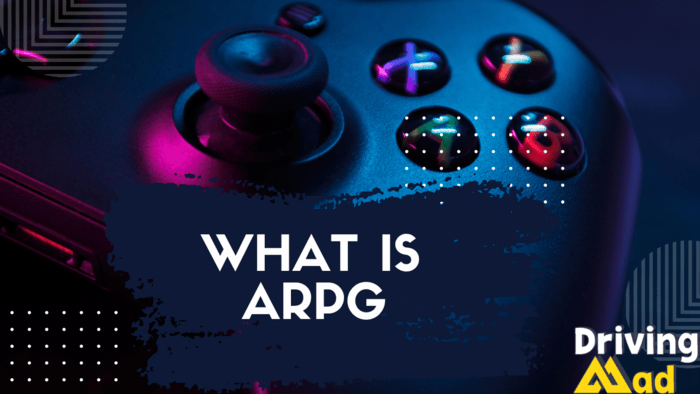An Action Role-Playing Game (ARPG) is a genre of video games that combines fast-pacedreal-time combat with the deep character progression and storytelling elements typical of role-playing games (RPGs).
In ARPGs, players take direct control of their character, engaging in active combat while leveling up, gaining new skills, and collecting loot.
This genre offers a perfect blend of action and role-playing elements, appealing to gamers who enjoy both intense combat and a rich progression system.

Core Features of ARPGs
- Real-Time Combat: One of the defining features of ARPGs is real-time combat, where players control their character directly in battle. Unlike traditional turn-based RPGs, players must react quickly, dodge attacks, and use special abilities on the fly. The emphasis is on skillful control, making every encounter exciting and requiring quick reflexes.
- Character Progression: As in traditional RPGs, character progression is a key aspect of ARPGs. Players earn experience points (XP) by defeating enemies, completing quests, and exploring the game world. As they level up, characters unlock new abilities, improve their stats, and become more powerful. This progression system often includes skill trees, allowing players to customize their character’s abilities to suit their playstyle.
- Loot System: ARPGs are well known for their rewarding loot systems. Throughout the game, players acquire weapons, armor, and magical items that improve their character’s abilities. These items often have randomized stats, which makes the loot system highly addictive and keeps players engaged in hunting for better gear. The process of finding, equipping, and upgrading new loot is a core component of the ARPG experience.
- Skill Trees and Customization: Many ARPGs feature intricate skill trees, enabling players to shape their character’s development in unique ways. Players can choose different paths that emphasize offensive, defensive, or support abilities, tailoring their character to fit specific combat roles. This customization allows for a wide variety of playstyles, making the game more replayable as players try different builds and approaches.
- Dungeon Crawling and Exploration: Another hallmark of ARPGs is the focus on dungeon crawling and exploration. These games often feature vast, randomly generated levels or dungeons filled with dangerous monsters, traps, and treasure. As players venture deeper into these areas, they encounter tougher enemies and rare items, making exploration a rewarding and essential part of the game.
- Multiplayer Options: Many ARPGs also offer multiplayer features, allowing players to team up with others to take on more difficult challenges. Co-op gameplay can be particularly satisfying, as friends can combine their unique character builds and strategies to overcome enemies and share in the loot.

How ARPGs Differ from Traditional RPGs?
While ARPGs share some similarities with traditional RPGs, they stand out in several ways:
- Combat Style: Traditional RPGs often feature turn-based or menu-driven combat, where players select actions from a list. In contrast, ARPGs require active participation, with players directly controlling their character during combat, resulting in a much faster pace.
- Pacing: ARPGs typically move at a much faster pace than their traditional counterparts. There is less emphasis on lengthy cutscenes, dialogues, and exploration, focusing instead on action and gameplay. The stories in ARPGs are often simpler but still provide context for the action.
- Character Building: In traditional RPGs, players often develop a well-rounded character with both combat and non-combat skills. In ARPGs, the focus is mainly on combat-related abilities, with less attention given to other character traits like social interactions or moral choices.
- Replayability: Due to the loot system and customizable skill trees, ARPGs tend to offer a high replay value. Players can experiment with different builds, characters, and strategies, keeping the game fresh even after many hours of gameplay.
Popular examples of ARPGs include Diablo, Path of Exile, Torchlight, and The Witcher 3: Wild Hunt.
These games are known for their addictive gameplay loops, where players repeatedly level up their characters, fight enemies, and collect loot.
Whether you’re exploring dungeons, battling hordes of monsters, or teaming up with friends in multiplayer modes, ARPGs provide an exciting and engaging gaming experience that keeps players coming back for more.

